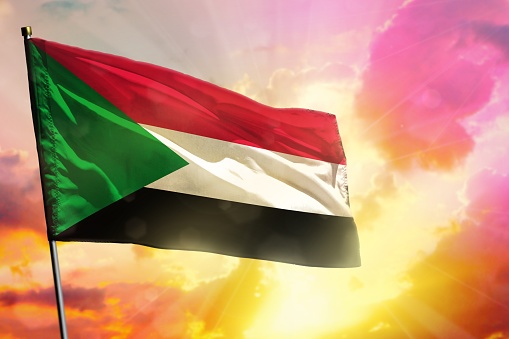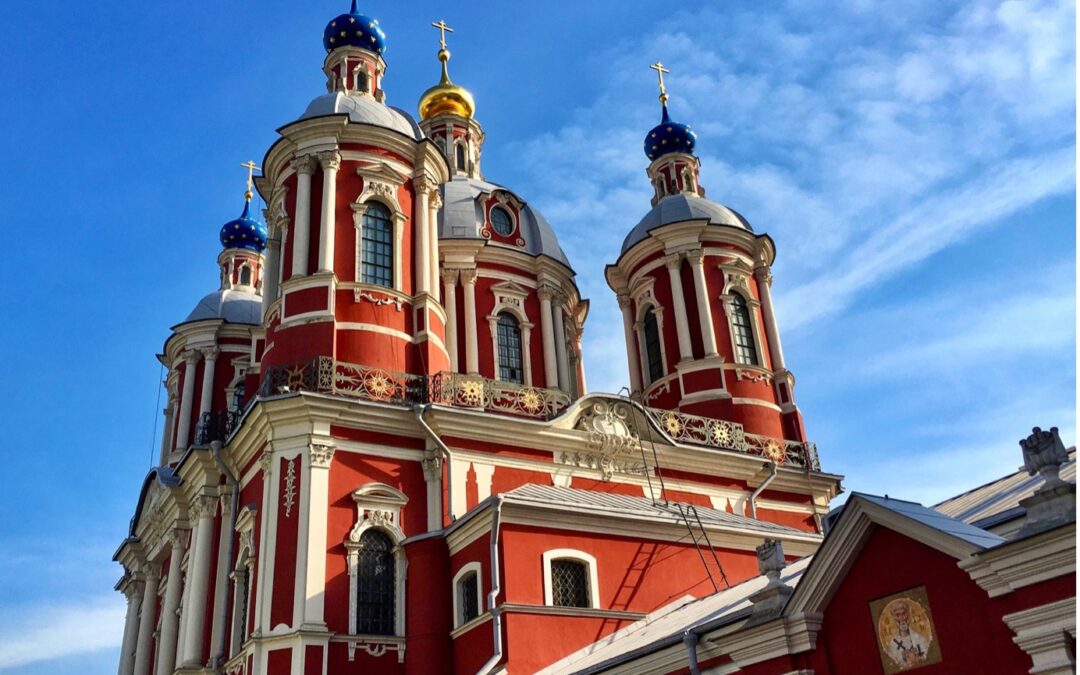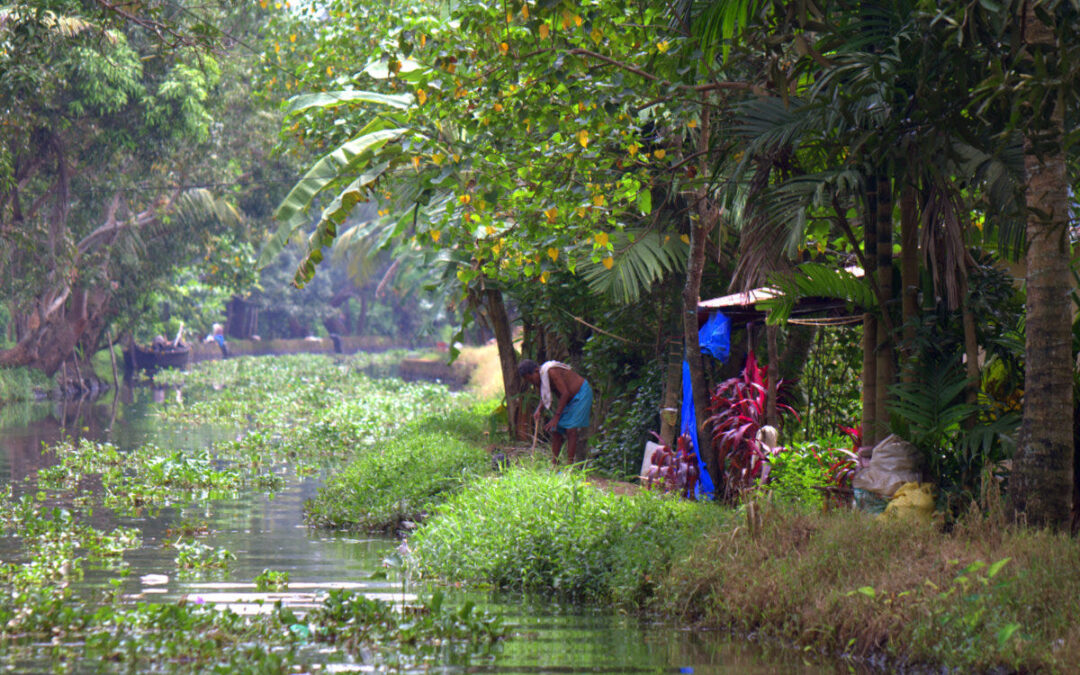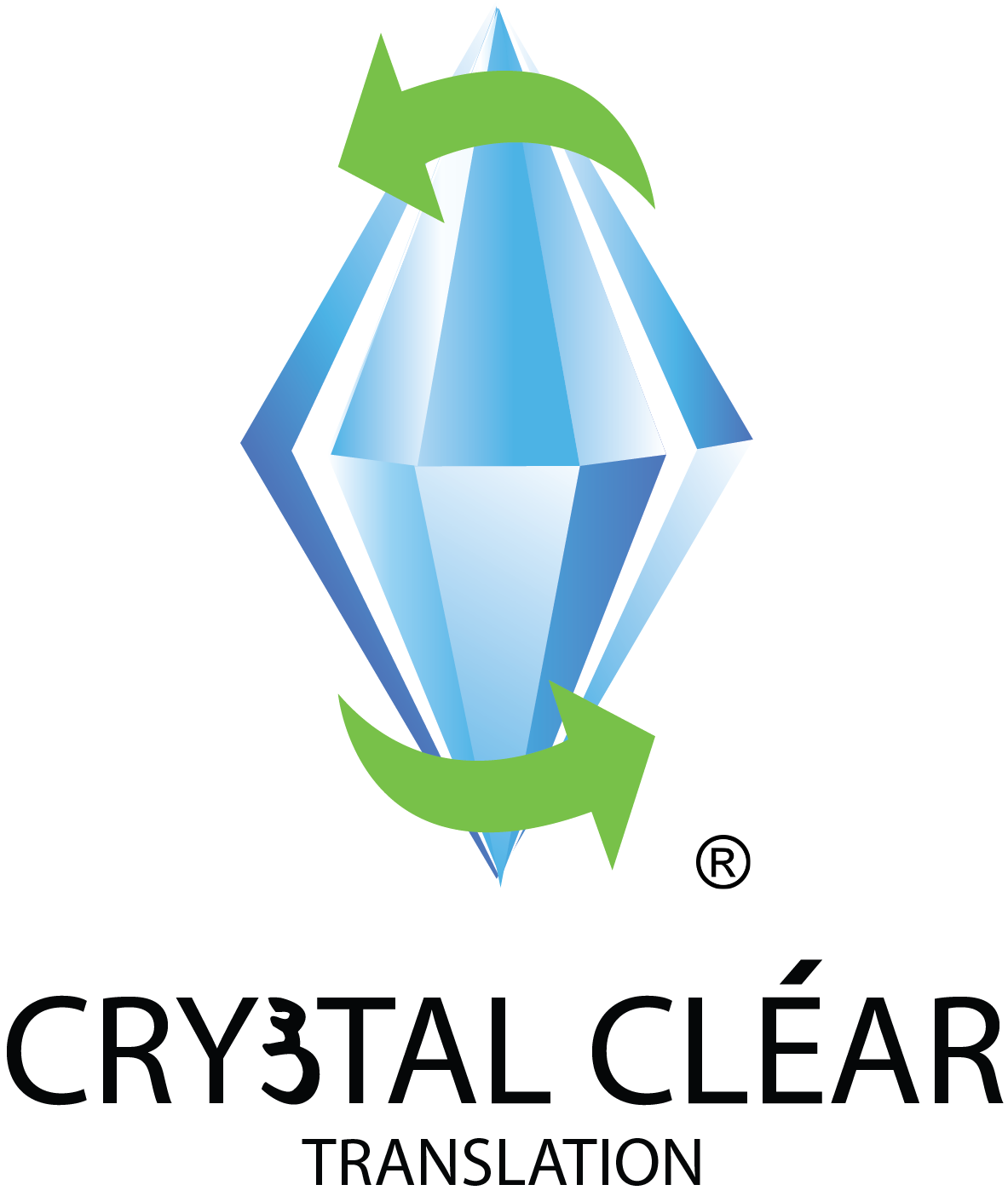
by Hammed Sonny | Nov 12, 2024 | Africa
Zarma (also known as Djerma) is one of the Songhay languages, which derive from Nilo-Saharan language family. The Songhay languages comprise two dialects, Northern Songhay and Southern Songhay (Zarma is a Southern Songhay language). The primary speakers of the Zarma language are the Zarma ethnic group, who live in Niger, Nigeria, Benin, Ghana and Burkina Faso. Most Zarma people live in Niger, accounting for around 21.2% of the population (around 4.92 million people). Of the approximately 4.92 million people of the Zarma group that live in Niger, around 3.12 million people are Zarma speakers.
Linguistic Features of the Zarma Language
Zarma is written in both the Arabic script and the Latin script, although, most speakers use a Latinised version of the language. Those Zarma speakers who write the language in the Arabic script utilise the Maghrebi and Naksh styles of writing. The Latinised Zarma alphabet is comprised of the same letters as the English language, albeit with the inclusion of the two letters “ŋ” (eng) and “ɲ”, which are written after vowels to indicate that they are nasalised vowels (pronounced using breath from the nose).
There are a number of different vowels and consonants in the Zarma language. The primary vowels of the Zarma language are “a” (pronounced as “ah”, like “father”), “e” (pronounced as “ey” like “obey”), “ay”, “I”, “o” and “u”. Regarding consonants, the majority used in Zarma are similar to those used in the English language, with a few exceptions. For example, the Zarma language uses the consonant “g” (a hard consonant pronounced in the same way as the “g” in “goose”),
In addition to this, the Zarma language uses the SOV (subject-object-verb) word order, and verbs written in the language do not use different forms when used for different tenses. For instance, sentences written in the negative form of the past tense feature the word “man” before the verb to indicate the negative. In the sentence, “Yesterday, I didn’t go to the market”, which translated into the Zarma language is “Bi ay man koy habu”, the verb “koy” (meaning “to go”) is prefixed by the word “man”.
Key Zarma phrases
- Hello – “Fo”
- Please – “Alhanan”
- My name is – “Ay ma…”
- I’m fine – “Bani samay walla”
- See you later – “Kala tonton”
- How much is…? – “Marje no…?”
- I want/I’d like – “Ay ga ba”
Is Zarma an official language?
The Zarma language is not an official language in Niger, or any of the West African countries within which the Songhay languages are most widely spoken. In fact, the official language in Niger is actually the French language. However, Zarma is regarded as a national language in Niger, and is used in both social and business environments. In addition to this, Zarma is also taught in primary education in Niger alongside English and French, and is also one of the languages used in media as well as publishing in Niger.
In Conclusion
Zarma may not be as widely spoken as the Hausa language, Zarma is an important lingua franca utilised by millions of speakers across West Africa, and is the most widely spoken language in Niamey, the capital city of Niger. The language has a fascinating history, used throughout the Songhai Empire in the 15th century, and as a growing language, Zarma is spoken by an increasing number of people in Niger and in other West African countries, like Nigeria, Mali, Benin and Ghana.
Since Zarma is not mutually intelligible with the other Songhay languages, it is important that any translator or interpreter you need to translate Zarma is fluent in the Zarma language. If you should require translation or interpretation of the Zarma language, or any language or dialect, you may be interested in the excellent services provided by Crystal Clear Translation. At CCT, we employ many efficient and reliable translators able to navigate the intricacies of many different languages and cultures. Click here for a quote if you should need interpretation or translation services in a multitude of different languages.

by Hammed Sonny | Oct 24, 2024 | Africa, Arab
Within the midst of Sudan, lies a web of different dialects. Being the third largest country within the continent of Africa, Sudan is known to be home to around 133 living languages- languages citizens use in their daily life.
The sheer number of languages that have evolved throughout the years can make it challenging to get your head around what is what, however if we break it down into categories, we can gain a better insight into this country of diverse dialect.
We will further explore this fascinating country and its extensive multilingualism.
Sudanese Arabic- The First Official Language of Sudan
Sudanese Arabic is spoken by approximately 15 million people in Sudan, making it the most dominant tongue. The language in question is categorised under the Afro-Asiatic family along with 300 other languages spoken North Africa and the Middle East.
This form of Arabic dialect is used widely within Sudan, heavily as a working language, meaning that it is used within the government, religious settings and in the media. Most Sudanese Arabic speakers reside within North Sudan.
Afro-Asiatic Languages in Sudan
The Afro-Asiatic family has two other languages that are spoken around Sudan. Although less common than Arabic, a healthy proportion of the population classify these as first languages.
Hausa: Primarily spoken within western regions.
Beja: Sometimes known as Bedawi, the Beja community has around 2 million speakers.
The Nubian Languages
The Nubian family of dialects is yet another umbrella of languages spoken by Sudanese people. The most prolific of them all is the Nobiin language, which accounts for most of the speakers in this family. It is ordinary for residents of North Sudan to speak Nobiin along with Sudanese Arabic.
In areas such as Khartoum, North Darfur and Jezirat Aba, Midob, a further Nubian language, is known to be spoken by members of the Midob community who have established themselves in these regions over the years.
Nuer and Dinka (Nilo-Saharan)
Prevalent within south-eastern Sudan, the Nuer language makes up 1.4 million of native tongue throughout the population. The Nuer community have a significant number of members residing in areas such as the Nile Valley.
Like Nuer, the Dinka locals have formed a vast community. In fact, they are the largest ethic group within South Sudan. The Dinka language is separated into dialects categorised by region; South-Eastern, South Central, South-Western, North-Eastern and Western.
Both Nilo-Saharan languages are closely related.
English in Sudan
Since 2005, English has been the second official language of Sudan. As with Arabic, it is avidly used in work environments.
Extinct Languages
A language is at risk of becoming extinct if it loses all native speakers. Within Sudan there are now 5 extinct languages. These are Homa, Mittu, Nding, Togoyo and Tarona. It is interesting to note the fact they have now become extinct; this could be due to the evolution of more modern dialects and what is getting taught.
Summary of Thoughts
It is extremely apparent that Sudan is a highly diverse country in terms of dialect. The continuous growth and development of language and culture within the country accounts for the prodigious string of languages. Whilst each one falls into a different category, whether it be regional or communal, each language is unique.
Do You Require an Interpreter or Translator?
If you feel you could benefit from our services, head over to Crystal Clear Translation for a quote.

by Hammed Sonny | Oct 14, 2024 | Asia
Kurmanji derives from the Kurdish language family. Sometimes known as northern Kurdish, Kurmanji is a language commonly spoken in southeast Turkey and Northern Syria. Out of all the Kurdish dialects, Kurmanji is the most widely spoken, with approximately 15 to 20 million native speakers combined.
History of Kurdish people (The Kurds)
There is not a great deal of information readily available about the background of the Kurds, however there are a few important points that we can note.
Kurdish people were found to be living within the mountains of Anatolia. It was here that dialects like Kurmanji were first heard of and have since evolved into modern tongues over the years.
Kurmanji in Syria
Kurds within Syria reside mostly in three regions of northern Syria close to the Turkish border. They make up the largest ethic minority, however the population is considerably less than that of Turkish Kurds. Out of the Syrian Kurd population, the most part will speak Kurmanji.
Kurmanji in Turkey
The majority of Kurmanji speakers live within the south-eastern area of Turkey and is the largest minority language within the country. Around 8 to 10 million Kurds in Turkey speak Kurmanji as their native tongue.
How is Kurmanji written?
The Kurdish dialect mainly written following the Latin alphabet in both the Turkish and Syrian variations. Although this is utilised widely, it is not classified as the standardised alphabet of the language. It is also not unheard of for Kurdish people to use the Cyrillic and Arabic scripts. Kurmanji differs completely to other Kurdish dialects that commonly use old Yazidi script.
Although the Latin alphabet is heavily used, English speakers would find it challenging to decipher the language due to meanings and pronunciations of words.
Below is an example of the Kurdish alphabet (deriving from Latin):
Examples of Kurmanji phrases:
Rojbash- Hello (formal greeting)
Shevabash- Goodnight
Saet çend e? – What time is it?
Grammar
The structure of grammar is quite complex, which also makes it less intelligible to the English. The grammatical aspects of Kurmanji are unique. In terms of difficulty, it is thought to be a hard language to learn.
Intelligible or Unintelligible?
Kurmanji dialects like that of Turkish and Syrian are considered to be mutually intelligible, as there is very little differences between them. Although there may be an occasional unique word or pronunciation, each dialect is almost identical. Kurmanji is in fact a group of dialects, but due to their striking similarities, most Kurds will state that they simply speak Kurmanji.
Concluding thoughts
It is apparent that the Kurmanji language is very intricate and unique, and although there is not a great deal of research readily available to us, we can still conclude that both Turkish and Syrian Kurmanji are extremely intelligible between regions. However, the language is not as intelligible to those who speak a different native tongue.
Do you require our services?
Should you require assistance with a translator or interpreter, visit Crystal Clear Translation for a quote.

by Hammed Sonny | Oct 7, 2024 | Europe
‘Balto-Slavic’ refers to the language group comprising the Baltic and Slavic branches of the wider Indo-European language family. Those who use this term accept the general hypothesis that, based on the linguistic similarities between the Baltic and Slavic languages, the two branches are descended from a common ancestor following the breaking up of Proto-Indo-European. There are around 18 ‘main’ languages in the group, but we’ve compiled the top six.
Russian
Russian is the largest of the Balto-Slavic languages in terms of speakers and belongs to the Slavic side of the language family branch. Closely related to Belarussian and Ukrainian, Russian is mainly spoken in the Russian Federation and by older generations in countries that were once part of the Soviet Union as satellite states. Currently, there are around 258 million Russian speakers worldwide, with approximately 137 million of these residing in Russia itself. One of the world’s ten most widely spoken languages, Russian is also one of the UN’s six official languages, alongside English, French, Spanish, Arabic, and Chinese. Generally, Russian is divided into three separate dialects – Northern, Central, and Southern – with many variants within each individual group. Russian is also often characterised by its use of intricate Cyrillic script that was introduced in 988 at the Kievan Rus’ conversion to Christianity. Across the years, the Russian language has enjoyed a huge cultural output, particularly in the spheres of literature, producing great names such as Tolstoy, Chekov, Akhmatova, and Pushkin. Here are some key phrases and expressions in Russian, in both Latin and Cyrillic script:
- Hello – Здpaвcтвyй(тe) (zdrastvuyte)
- Goodbye – Дo cвидaния (do svidanya)
- Please – Пoжaлyйcтa (pozhalusta)
- Thank you – Cпacибo (spasibo)
- My name is – Меня зовут (menya zovut)
- Where is…? – Где …? (gde…?)
Ukrainian
Related to Russian and Belarussian through the common ancestor language of Old East Slavic, the Ukrainian language boasts approximately 40 million speakers worldwide, with 31 million in Ukraine itself and another 8 – 9 million spread across the former republics of the Soviet Union. Due to years of control by Russia and incorporation into the Russian state, the use of Ukrainian (as a separate and unique language) was not widely encouraged until after the Bolshevik revolution of 1917, where it began to establish itself more in written language and education. Even then, Ukrainian still competes with Russian in its native country – in northern and metropolitan areas of the country, Russian is still widely spoken, and Ukrainian is preferred in slightly more rural areas. Since the fall of the Soviet Union in 1991, there have been significant efforts to increase the status and use of the Ukrainian language, but there are still obstacles concerning the partial domination of Russian in matters of government, administration, and commerce. Some expressions in Ukrainian are:
- Hello – Добрий день (dobryi den’)
- How are you? – Як справи (jak spravy)?
- See you later – Побачимось (pobatchymos)
- I don’t know – Я не знаю) (ja ne znaju)
- Cheers! – Будьмо (budmo)!
Serbo-Croat
‘Serbo-Croat’ is a term used to describe the South Slavic language(s) spoken in the countries that once made up the one-time state of Yugoslavia that existed from 1918 to 1992. From 1954 onwards, Serbo-Croat was the ‘official’ language of Yugoslavia, though in truth it is not one language, but several mutually intelligible ones; these are Serbian, Croatian, Bosnian, and the Montenegrin language. It is still a controversial term socio-politically, with the argument that it is too homogenising. As of 2011, over 21 million people spoke a language that falls under the term ‘Serbo-Croat’; Serbian has around 9.5 million speakers, Croatian has 4.8 million, Bosnian has 2.2 million, and Montenegrin (only considered separately from Serbian, its close relative, from around 2003) has around 232, 600 speakers as of 2019. The Serbo-Croat languages use both the Cyrillic and the Latin alphabet, with many people often able to switch between both as they choose, with the media often doing the same. Although very linguistically similar, the Serbo-Croat languages have numerous lexical differences. For instance, Croatian has kept the bulk of Slavic-origin words, whilst Serbian and Bosnian have a greater number of loanwords from Russian and Western European Languages. This can be seen in the word for ‘October’ – Serbian and Croatian use the recognisable oktobar, whilst Croatian has the term listopad, which translates literally to ‘leaf fall’. Some unique terms in Serbian, Bosnian, and Croatian are:
- Nice to meet you (Croatian) – Drago mi je
- Thank you (Serbian) – Hvala
- Please (Bosnian) – Molim
- What is your name? (Croaitian) – Kako se zovete?
- Where is…? (Serbian) – Gde je…?
- How much is this? (Bosnian) – Koliko košta ovo?
Polish
Polish is the second most-widely spoken Balto-Slavic language after Russian, spoken by a total of 40.3 million people globally. The language has national language status in Poland and is one of the official languages of the European Union. It is also a recognised minority language in the Czech Republic, Lithuania, Hungary, Romania, Slovakia, and Ukraine. In Poland, there are 36.7 million Polish speakers, of which number 36.5 million people speak Polish as their first language. As well as Standard Polish, there are four main Polish dialects: Wielkopolski (spoken in the west of Poland, Małopolski (spoken in the south and south-east), Masovian (spoken in central and eastern Poland), and Silesian (spoken in the southwest of Poland).
Polish key phrases:
- Witam – Welcome
- Cześć – Hello
- Jak się Pan(i) miewa?– How are you?
- Mam na imię… – My name is…
- Bardzo mi miło – Pleased to meet you
- Powodzenia! – Good luck!
Czech
Czech, previously known as Bohemian, is a West Slavic language, spoken by 10.5 million people in Czechia, also known as the Czech Republic, as the country’s official language. In total, the Czech language is spoken by 13.3 million people globally, particularly in Austria, Bosnia and Herzegovina, Croatia, Poland, Romania, and Slovakia, where Czech is a recognised minority language. It is also one of the official recognised languages of the European Union. The Czech language is considered as mutually intelligible with the Slovak language, as well as sharing some similarities with Polish. In addition to the Common Czech dialect, the main Czech dialect spoken mainly in the Bohemia region, there are two main dialect groups of the Czech language, namely the Bohemian dialects, such as the Chod dialect, and the Moravian dialect, which includes the Lach, Central Moravian, and Eastern Moravian dialects.
Czech key phrases:
- Vitejte – Welcome
- Dobrý den – Hello
- Jak se mate? – How are you?
- Jak se jmenujete?– What’s your name?
- Jmenuju se … – My name is…
- Hodně štěstí! – Good luck!
Bulgarian
Bulgarian is one of the South Slavic languages and is spoken by 6.84 million people in Bulgaria. It is spoken by 8.14 million people globally, notably in Greece, Hungary, Moldova, Romania, Serbia, Turkey, and Ukraine. The Bulgarian language is an official language in Bulgaria and is one of the official languages of the European Union. In addition to this, Bulgarian is one of the Balkan Sprachbund languages, a group of languages that includes the Balkan Slavic languages (Bulgarian, Macedonian), Balkan Romance languages (Romanian) the Torlakian dialect (spoken in Serbia, Kosovo), the Serbo-Croatian language, and Albanian. Like the Slavic languages Macedonian and Serbian, Bulgarian is written using a Cyrillic script.
Bulgarian key phrases:
- Zdraveite – Hello
- Kazvam se… – My name is…
- Blagodaria – Thank you
- Molia – Please
- Kade e…? – Where is…?
- Kolko – How much?
Concluding Thoughts
The Balto-Slavic languages contain a great deal of language diversity and differences, as well as similarities and mutual intelligibility. However, for all the similarities these languages share, they shouldn’t be considered as one and the same. Rather, the Baltic-Slavic languages may share similar origins but are as equally as interesting as the other. If you require translation or interpreting services in any language, you can get a quote here from Crystal Clear Translation.

by Hammed Sonny | Sep 30, 2024 | Asia
The Malayalam language is spoken mainly in India. Part of the Dravidian family of dialects, Malayalam is a tongue with a rich cultural background.
Status
Malayalam is present within many regions of India. Most prevalent in the Indian state of Kerala, it is also spoken in smaller vicinities such as Lakshadweep and Puducherry. Within these regions, Malayalam has official language status. Overall, there are approximately 34 million native speakers nationwide.
As well as in these larger areas, smaller cluster communities also utilise the dialect. Most of these speaking areas are neighbouring states surrounding Kerala. These places include Kodagu, Dakshina Kannada, Karnataka, Nilgiris, Kanyakumari and Tamil Nadu.
Malayalam History
Out of all of the Dravidian languages, Malayalam is in fact the youngest of them all. Other languages in the family include Tamil, Kota, Kodagu and Kannada. The Malayalam dialect is most similar to Tamil, and it took around 5 centuries for it to evolve and establish itself as an official language. During this time, languages such as Sanskrit and Tamil were considered working languages; being used within business and educational settings. These two have influenced the development of Malayalam.
Vocabulary
As mentioned earlier, the language has taken inspiration from many other Indian dialects, like that of Sanskrit- using multiple loanwords day to day. Furthermore, the influence of Europeans has also had a significant impact on the evolution- languages such as English and Portuguese are known to have links to the vocabulary. Interestingly, some languages also take influence from Malayalam too.
Writing and script
The most used script in the Malayalam language is Kolezhutu – which has derived from the Grandha script. The pronunciation varies between locations, which includes accents and grammar too.
There are multiple different media materials that are printed in Malayalam. This includes 170 plus newspapers and magazines. The Malayalam language is used richly within the media of Kerala, and the continuous spread of the dialect throughout other regions too. One example of the growing language status is the fact that Malayalam is now being taught in educational settings across many regions.
Final thoughts
Malayalam is an incredibly fascinating language. There is a lot of history and culture surrounding the development of the language, and today it is utilised greatly within many regions of India. It is also apparent how it is continually evolving through the influence of European dialects.
Do you require our services?
Should you require an interpretation or translation service, visit Crystal Clear Translation for a quote.






